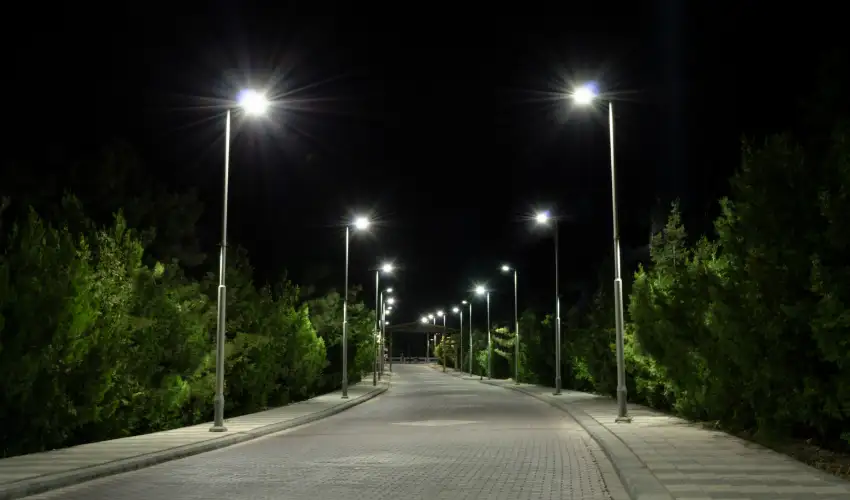
Street Light Control: Illuminating the Future
Street Light Control systems have undergone a remarkable transformation in recent years, revolutionizing urban lighting infrastructure. From traditional systems to smart, energy-efficient solutions, the evolution of street light control has significantly impacted cities worldwide. In this guide, we delve into the intricacies of street light control systems, exploring their benefits, functionalities, and the future they promise.
Understanding Street Light Control
Street Light Control Systems: An Overview
Street light control systems are a crucial component of urban infrastructure management. These systems not only provide efficient lighting but also contribute to energy conservation and cost reduction. The evolution of street light control has seen a shift from conventional systems to smart, IoT-enabled solutions, offering enhanced functionality and efficiency.
The Evolution of Street Light Control
Traditionally, street lights were controlled manually, resulting in inefficiencies and unnecessary energy consumption. However, advancements in technology have led to the development of automated control systems. These systems utilize sensors, IoT connectivity, and data analytics to optimize lighting levels based on environmental conditions and time of day.
Benefits of Street Light Control Systems
- Energy Efficiency: Street light control systems help reduce energy consumption by adjusting lighting levels based on real-time requirements.
- Cost Savings: By optimizing energy usage, these systems lead to significant cost savings for municipalities and local governments.
- Enhanced Safety: Well-lit streets contribute to improved safety by reducing the risk of accidents and criminal activities.
- Environmental Impact: Reduced energy consumption translates to lower carbon emissions, contributing to a greener and more sustainable environment.
Components of Street Light Control Systems
- Sensors: These detect ambient light levels, motion, and other environmental factors to adjust lighting accordingly.
- Controllers: Controllers manage the operation of street lights based on input from sensors and predefined parameters.
- Communication Infrastructure: IoT-enabled street light control systems rely on robust communication networks to transmit data and commands.
- Software: Intuitive software interfaces allow for easy monitoring, management, and optimization of street light networks.
Advancements in Street Light Control
Smart Street Light Control Systems
Smart street light control systems represent the next phase in the evolution of urban lighting infrastructure. These systems utilize advanced sensors, real-time data analytics, and IoT connectivity to optimize energy usage and enhance operational efficiency.
IoT Integration
Internet of Things (IoT) technology plays a pivotal role in modern street light control systems. By connecting individual street lights to a centralized network, IoT enables remote monitoring, management, and control, leading to improved efficiency and cost savings.
Data Analytics
Data analytics is another critical component of modern street light control systems. By analyzing data collected from sensors and other sources, these systems can optimize lighting schedules, detect faults, and predict maintenance requirements, ensuring smooth operation and minimal downtime.
Remote Monitoring and Management
One of the key benefits of smart street light control systems is the ability to monitor and manage lighting infrastructure remotely. Municipalities and local governments can access real-time data, monitor performance, and make adjustments as needed, all from a centralized dashboard.
Implementing Street Light Control Systems
Factors to Consider
- Infrastructure Compatibility: Before implementing a street light control system, it’s essential to ensure that existing infrastructure is compatible with the new technology.
- Scalability: The chosen system should be scalable to accommodate future growth and expansion.
- Return on Investment (ROI): Evaluate the potential cost savings and benefits of the system to determine its ROI.
- Integration with Existing Systems: Seamless integration with other urban infrastructure systems is crucial for optimal performance and efficiency.
Case Studies
- Los Angeles, California: The city of Los Angeles implemented a smart street light control system, resulting in a 63% reduction in energy consumption and significant cost savings.
- Barcelona, Spain: Barcelona’s adoption of IoT-enabled street light control systems has led to improved efficiency, enhanced safety, and reduced environmental impact.
Future Trends
- Artificial Intelligence: AI-driven street light control systems will further optimize energy usage and operational efficiency.
- Renewable Energy Integration: Integration with renewable energy sources such as solar power will reduce dependency on traditional energy grids.
- Advanced Sensor Technology: Advancements in sensor technology will enable more precise control and monitoring of street light networks.
Street Light Control: FAQs
What is street light control?
Street light control involves the management and optimization of urban lighting infrastructure to improve energy efficiency and operational effectiveness.
How do street light control systems work?
Street light control systems utilize sensors, data analytics, and IoT connectivity to adjust lighting levels based on environmental conditions and time of day.
What are the benefits of street light control systems?
Street light control systems offer several benefits, including energy efficiency, cost savings, enhanced safety, and reduced environmental impact.
Are street light control systems scalable?
Yes, street light control systems are scalable and can be customized to accommodate the needs of different urban environments.
How do smart street light control systems differ from traditional systems?
Smart street light control systems utilize advanced technology such as IoT connectivity and data analytics to optimize energy usage and enhance operational efficiency.
What are the future trends in street light control systems?
Future trends in street light control include the integration of artificial intelligence, renewable energy sources, and advanced sensor technology.
